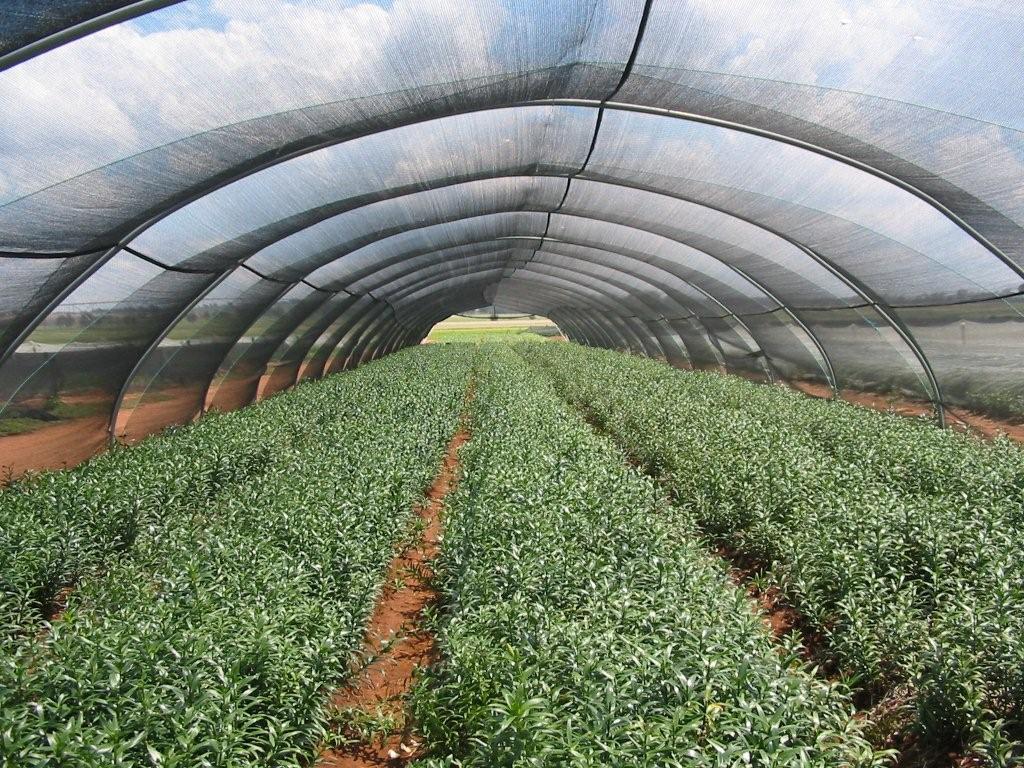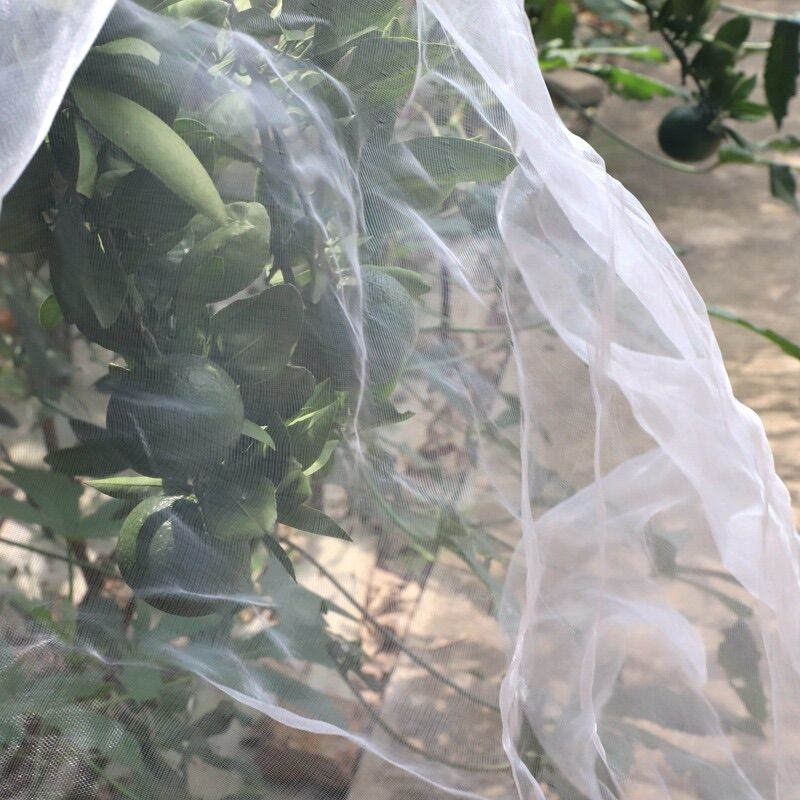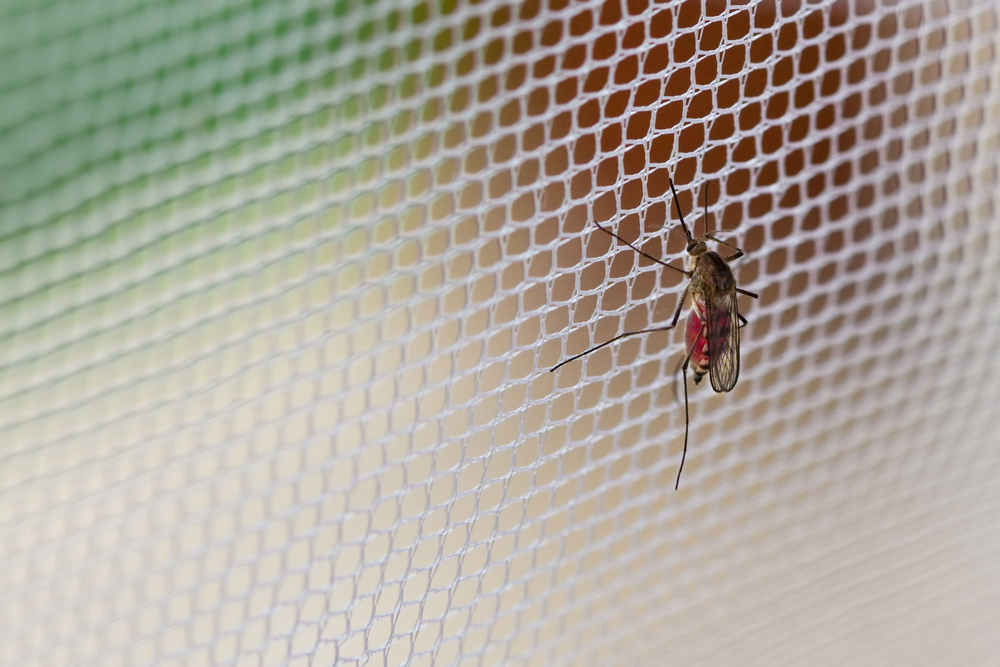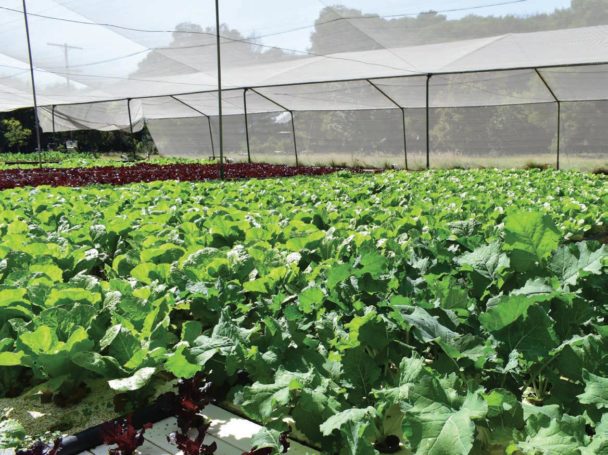Shade cloth cover for plants is relatively less expensive than other protective structures. Furthermore they are easy to erect and the producer can design his own structure to fulfil his own unique requirements.
When the decision is made to provide shade net cover it is important to realise that the construction of such a structure may simultaneously have a direct influence on the appearance and presence of pests, as well as farmer-friendly insects.
During a study with head lettuce (cabbage lettuce) in the Central Freestate it was found, for example, that the population dynamics (and to a lesser degree also the species variety) of plague plant aphids and advantageous ladybirds showed variations between different types of shade cloth shelters.

For one of the studies, the structure was covered completely with shade cloth, and for another the cloth was used to cover only the roof area. The following are some of the observations made during the study:
Shade cloth on the sides of a completely covered structure will not obstruct the movement of aphids since these insects are small enough to gain entrance easily through the netting to any normal net-covered structure. As was proven by the study it is possible that plant aphid numbers may even be higher in a full-cover structure during the summer months, while it could be significantly lower in a partly covered structure during the same period.
It is mainly the more homogeneous environment and slightly higher humidity in the completely covered structures that may benefit and promote the development of certain plant aphids (e.g. Acyrthosiphon lactucae).
Such a beneficial environment may allow the pest to spread very fast inside a production unit. Completely covered structures simultaneously tend to prevent the larger ladybirds from entering the structure resulting in lower numbers of the friendly natural predators.
This is not a desired situation as the mobility, effectiveness in finding prey, specific aim of the ladybirds to find prey, and their main to find aphids as natural prey, make them a popular choice for the control of an aphid infestation. Keeping the above in mind, and if integrated pest control with the aid of natural prey enemies enjoys priority, it can be rewarding to open the side(s) of such a structure during the warmer months (and even during specific times in the day) to ease the access of prey enemies provided that the damage caused by other pests (such as cutworm, bollworm and locusts) will not be too drastic.

It is also interesting to mention that larval ladybirds showed a higher incidence in the completely covered structure compared with the partly covered structure. A possible reason for the lower incidence could be the lesser presence of predator (soldier) ants (specifically Anoplolepis custodiens) in the structure. They kill the larvae of ladybirds as the larvae cannot escape from them as easily as the adult ladybugs.
Furthermore the lesser presence of adult ladybirds in fully enclosed structures will lead to lower competition between them and the larvae with the result that the larvae will have a better chance of survival. Lower aphid counts in a partly enclosed structure during the summer months can be ascribed to a higher presence of adult ladybirds as they have easier access to this type of structure.
However, this does not mean that partly enclosed structures will be free of aphids. It was found, for instance, that the aphid species Nasonovia ribisnigri may enjoy a higher incidence during the summer months in this type of structure as a result of their preference to feed in the heart of the lettuce heads where the older leaves hide them from their predator enemies.
However, this situation can also be reversed during the cooler months when most of their predator enemies tend to have a lower presence, or are totally absent. In such an instance both structure types may be home to an equal number of aphids and, during the warmer months, it is even possible that the structure which had the most aphids in the warmer months, could now have the smallest population.

Consequently it is imperative for the farmer to pay special attention to the interaction between prey and predator in his structures under netting, while also keeping in mind that it is a dynamic system changing continuously as a result of certain insects which may be present, or become absent, and are under seasonal influence.
From the above it is clear that small differences in the construction of net-covered structures can influence the presence and species composition of plague and advantageous insects which, from their side, will necessitate control actions based on the numbers of insects present.
However, there is no doubt that the use of net-covered structures definitely holds advantages for crop production as a result of the improved protection against nature extremities. By merely taking note of the interaction between prey and predator enemies, net-covered structures may even be utilised advantageously in integrated pest control systems, resulting in savings on certain input requirements.









